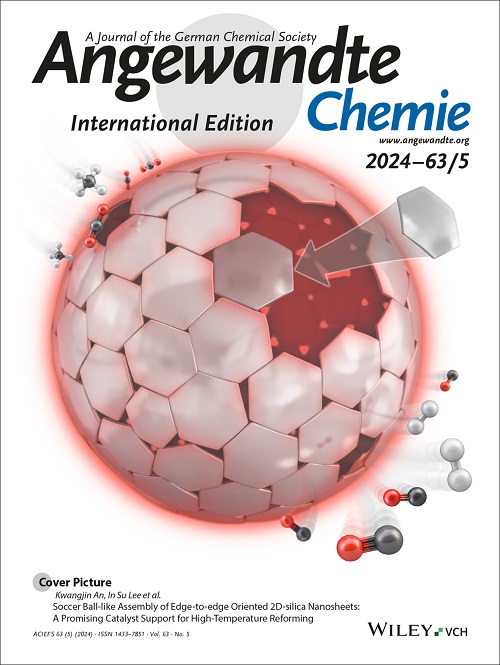Three-Electron Uric Acid Oxidation via Interdistance-Dependent Switching Pathways in Correlated Single-Atom Catalysts for Boosting Sensing Signals
IF 16.1
1区 化学
Q1 CHEMISTRY, MULTIDISCIPLINARY
引用次数: 0
Abstract
The overly simplistic geometric and electronic structures of single-atom catalysts have become a significant bottleneck in the field of single-atom sensing, impeding both the design of highly efficient electrochemical sensors and the establishment of structure-activity relationships. To address these challenges, we present a novel strategy to boost the sensing performance of single-atom catalysts by precisely tuning the single-atomic interdistance (SAD) in correlated single-atom catalysts (c-SACs). A series of Ru-based c-SACs (Rud=6.2 Å, Rud=7.0 Å, and Rud=9.3 Å) are synthesized with predetermined SAD values, which are comprehensively characterized by various techniques. Electrochemical studies on uric acid (UA) oxidation reveal that Rud=6.2 Å demonstrates an extraordinary sensitivity of 9.83 μA μM-1cm-2, which is superior to most of electrochemistry biosensors reported previously. Kinetic analysis and product examination unveil that the 6.2 Å Ru SAD instigates a distinctive three-electron oxidation of UA, with an extra electron transfer compared to the conventional two-electron pathway, which fundamentally enhances its sensitivity. Density functional theory calculations confirm the optimal SAD facilitates dual-site UA adsorption and accelerated charge transfer dynamics. This investigation provides novel insights into the strategic engineering of high-performance SAC-based electrochemical sensors by precisely controlling the atomic-scale structure of active sites.通过相关单原子催化剂中的间距开关途径实现三电子尿酸氧化,从而增强传感信号
本文章由计算机程序翻译,如有差异,请以英文原文为准。
求助全文
约1分钟内获得全文
求助全文
来源期刊
CiteScore
26.60
自引率
6.60%
发文量
3549
审稿时长
1.5 months
期刊介绍:
Angewandte Chemie, a journal of the German Chemical Society (GDCh), maintains a leading position among scholarly journals in general chemistry with an impressive Impact Factor of 16.6 (2022 Journal Citation Reports, Clarivate, 2023). Published weekly in a reader-friendly format, it features new articles almost every day. Established in 1887, Angewandte Chemie is a prominent chemistry journal, offering a dynamic blend of Review-type articles, Highlights, Communications, and Research Articles on a weekly basis, making it unique in the field.

 求助内容:
求助内容: 应助结果提醒方式:
应助结果提醒方式:


